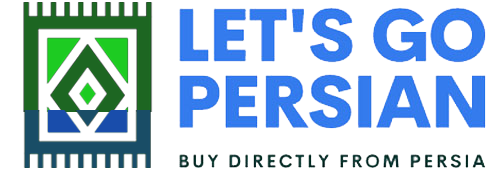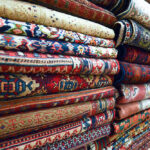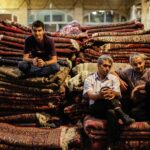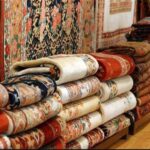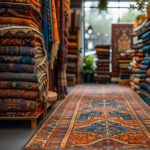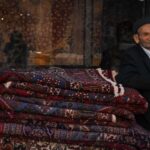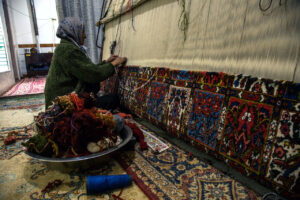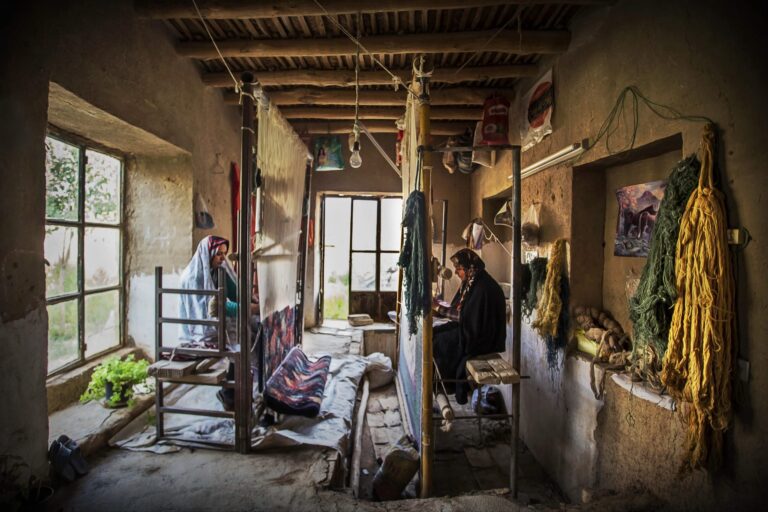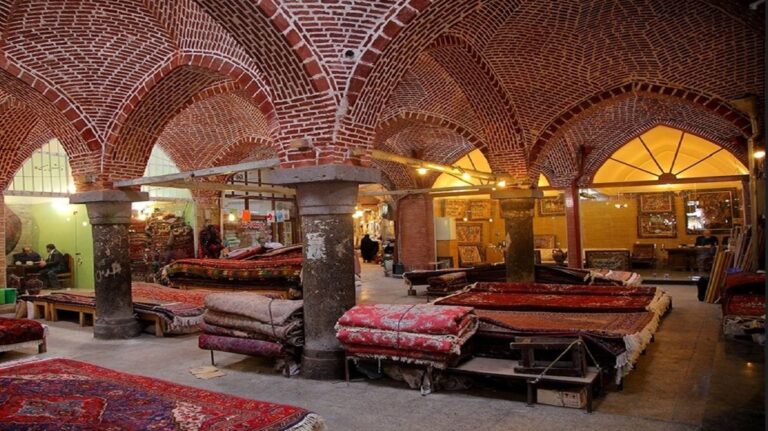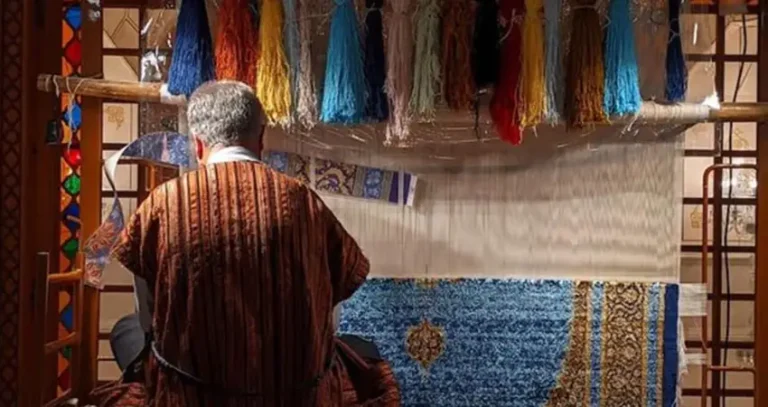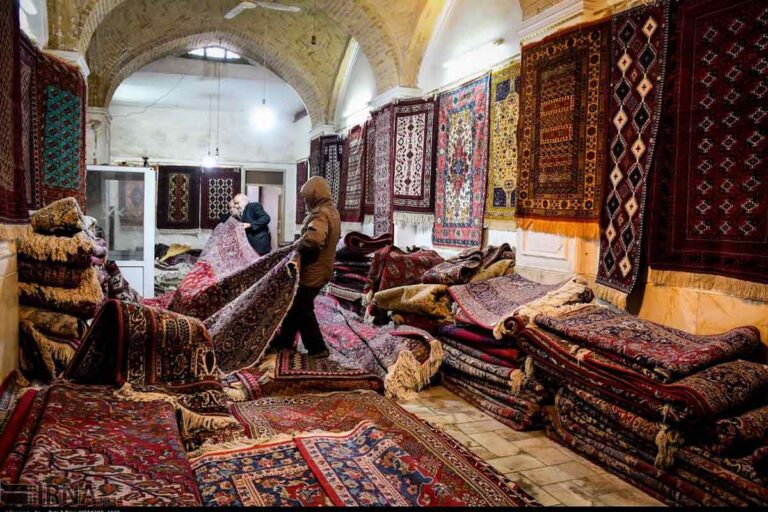Persian Carpet Color Palette Comparisons: Cultural Symbolism in Regional Persian Rug Designs
Shaping Persian Rug Design Styles: Historical Influences Across Regions
The art of Persian rug making is distinguished not only by its intricate patterns and vivid color palettes but also by the diverse knotting techniques employed across different regions. From the density of the knots to whether a rug is crafted with a symmetric (Turkish) or asymmetric (Persian) knot, each technique is a window into local traditions, technical prowess, and cultural expression. This comparative analysis explores how various regions approach knotting techniques, shedding light on the rich tapestry of Persian rug artistry.
Understanding Knotting Techniques
Symmetric (Turkish) Knot vs. Asymmetric (Persian) Knot:
-
Symmetric (Turkish) Knot: In this method, the knot is tied uniformly on both sides of the warp thread, resulting in a very sturdy and often denser weave. This technique is frequently associated with regions that value durability and geometric precision.
-
Asymmetric (Persian) Knot: Here, the knot is tied in a slightly offset manner, which allows for more fluid, curvilinear designs. It is renowned for its finesse and the intricate detailing it enables, making it a hallmark of many traditional Persian rugs.
Knot Density:
The number of knots per square inch (KPSI) or square centimeter (KPSC) is a critical measure of a rug’s quality. Higher knot density often translates to greater detail and longevity, although the optimal density varies with design and regional style.
Regional Comparisons
Tabriz: Precision and High Knot Density
Technique & Density:
-
Knotting Method: Tabriz rugs frequently utilize the symmetric knot, lending the textiles a robust, grid-like structure that complements their intricate geometric designs.
-
Knot Density: These rugs are often characterized by high knot densities, ensuring precision in the repetitive motifs that are typical of Tabriz designs.
Cultural Insight:
The emphasis on high knot density in Tabriz reflects a deep commitment to craftsmanship and durability, making these rugs prized for both their aesthetic appeal and longevity.
Kashan: Finesse Through Fluid Patterns
Technique & Density:
-
Knotting Method: Kashan rugs typically favor the asymmetric knot, which allows for more fluid, curvilinear designs. This technique enhances the delicate floral and nature-inspired motifs common in Kashan pieces.
-
Knot Density: While knot density is generally moderate, it is applied with such finesse that each knot contributes to a softer, more artistic overall appearance.
Cultural Insight:
Kashan’s approach underscores an artistic philosophy where beauty is found in the details, and the asymmetric technique provides the flexibility needed for expressive, organic patterns.
Nain: Subtle Elegance in Minimalism
Technique & Density:
-
Knotting Method: Nain carpets are often crafted using the asymmetric knot, a choice that supports their minimalist and refined designs.
-
Knot Density: Although the density is usually on the higher side to capture subtle nuances, the overall effect remains light and uncluttered.
Cultural Insight:
In Nain, the balance between high knot density and minimalist design epitomizes a cultural preference for restraint and understated elegance, where each knot contributes to a harmonious whole.
Qom: Spiritual Expression Through Intricate Detailing
Technique & Density:
-
Knotting Method: Qom rugs are known for employing the asymmetric knot, which is ideal for the intricate, spiritually symbolic patterns they feature.
-
Knot Density: Qom pieces typically display a very high knot density, allowing for detailed calligraphic elements and sacred geometries that are integral to their design.
Cultural Insight:
The technique and high density in Qom rugs reflect the city’s deep spiritual heritage, where every knot is imbued with symbolic meaning and meditative purpose.
Isfahan: A Blend of Ornamentation and Technical Mastery
Technique & Density:
-
Knotting Method: Isfahan carpets often combine both knotting techniques, though they lean toward the symmetric knot to support their intricate, often multi-layered designs.
-
Knot Density: The result is a high knot density that ensures each element—from central medallions to fine borders—retains clarity and sharpness.
Cultural Insight:
Isfahan’s dual approach to knotting underscores its legacy as a cultural and artistic hub, where technical mastery is married to ornamental complexity.
Kerman: Eclectic Influences and Robust Construction
Technique & Density:
-
Knotting Method: Kerman rugs frequently use the symmetric knot, providing a robust structure that supports a diverse range of patterns—from bold pictorial scenes to intricate floral designs.
-
Knot Density: They often feature moderate to high knot densities, striking a balance between elaborate detail and structural strength.
Cultural Insight:
The choice of technique in Kerman reflects a blend of traditional influences and a readiness to experiment, resulting in textiles that are as durable as they are visually compelling.
Ardabil: Legacy of Historic Weaving
Technique & Density:
-
Knotting Method: Ardabil carpets, famous for their historical significance, often utilize the symmetric knot. This technique helps maintain the precise, timeless patterns that define these legendary rugs.
-
Knot Density: Ardabil rugs tend to have a very high knot density, which preserves the intricacy of their centuries-old designs.
Cultural Insight:
For Ardabil, the emphasis on high knot density and a symmetric technique is a nod to the past—ensuring that historical and artistic traditions continue to be celebrated through impeccable craftsmanship.
Qazvin: Royal Influence and Artistic Innovation
Technique & Density:
-
Knotting Method: Qazvin rugs commonly employ the symmetric knot, supporting the regal and dynamic designs that reflect the city’s storied past.
-
Knot Density: A high knot density is a hallmark of Qazvin pieces, contributing to their rich detail and sophisticated visual narratives.
Cultural Insight:
The robust structure provided by the symmetric knot in Qazvin rugs not only echoes the historical opulence of the region but also underlines a continual drive for artistic excellence and innovation.
Shiraz: Poetic Craft and Bold Statements
Technique & Density:
-
Knotting Method: Shiraz carpets often feature the asymmetric knot, allowing artisans to craft bold, expressive patterns that resonate with the city’s poetic heritage.
-
Knot Density: These rugs typically exhibit moderate knot densities, enough to capture dynamic motifs without overwhelming the design’s expressive intent.
Cultural Insight:
In Shiraz, the use of the asymmetric technique is a deliberate choice to facilitate artistic expression, translating the city’s rich literary and cultural traditions into visual form.
Yazd: Desert Aesthetics and Enduring Simplicity
Technique & Density:
-
Knotting Method: Yazd rugs are known for their simplicity and practicality, frequently employing the symmetric knot to create durable, well-defined patterns.
-
Knot Density: While knot density can be moderate, it is meticulously applied to highlight the desert-inspired designs and subtle details.
Cultural Insight:
Yazd’s approach reflects a harmonious blend of durability and elegance, where the symmetric knot enhances the visual clarity and timeless quality of its desert aesthetics.
Sanandaj: Ethnic Patterns and Dynamic Weaves
Technique & Density:
-
Knotting Method: Sanandaj rugs, influenced by rich Kurdish traditions, often utilize the asymmetric knot. This technique lends itself well to the dynamic, folk-inspired patterns characteristic of the region.
-
Knot Density: These rugs can vary in knot density, with many showcasing moderately high densities that allow for vibrant storytelling through pattern and texture.
Cultural Insight:
Sanandaj’s vibrant textiles, created with the fluidity of the asymmetric knot, are a celebration of ethnic identity and cultural dynamism—a tribute to the region’s enduring artistic spirit.
Conclusion
The diverse knotting techniques and densities found across Persian rug regions are not merely technical details—they are integral expressions of cultural identity, historical narrative, and artistic innovation. Whether it’s the symmetric knots that underpin the robust, enduring designs of Tabriz, Ardabil, and Qazvin, or the asymmetric knots that provide fluidity and artistic nuance in Kashan, Qom, Shiraz, and Sanandaj, each approach offers a unique perspective on the rich heritage of Persian textile art.
These regional variations remind us that every rug is a masterpiece, woven with purpose and passion. By understanding the technical intricacies behind these textiles, we not only gain a deeper appreciation for their beauty but also for the centuries-old traditions that continue to inspire their creation.
